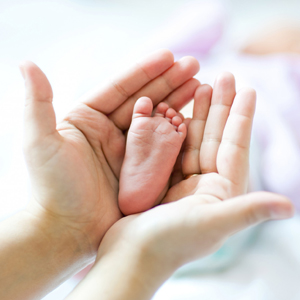Normal Delivery
Providing you with high-quality health-care services!
The most typical method of giving birth is through normal delivery. This usually implies that no devices, such as forceps or vacuum extraction, are used to assist the baby as it exits the mother’s body and travels through the birth canal. Unlike a caesarean section, normal delivery carries fewer risks and is also less problematic during subsequent pregnancies, making recovery easier.
However, not all expectant mothers will be able to deliver their babies naturally. Body types vary widely, and some women are unable to produce enough hormones to undergo labour spontaneously. In such cases, a doctor will perform a C-section delivery or another type of delivery.
When is a Normal delivery advised?
The most efficient method of giving birth is through a normal delivery. However, in some circumstances, it might be necessary for doctors to perform a C-section birth or another type of delivery. This decision will be made by an obstetrician depending on the mother’s condition and the level of danger involved.
If there are no difficulties with the pregnancy, labour, or delivery, a normal delivery is recommended. It is important to note that every pregnant woman has specific requirements, and the doctor will recommend a delivery technique based on any potential risks or current health issues. For young, healthy women with normal blood pressure and a foetus in the correct position, a normal birth is typically advised.
Various factors are taken into consideration by doctors when recommending a normal delivery:
- A persistent need to urinate due to the uterus’s growth placing more pressure on the bladder.
- Increased vaginal discharge caused by the cervix growing and blood vessels in the reproductive organs being affected.
- The readiness for vaginal delivery can be determined by the presence of sore breasts.
- Pain in the lower back as the foetus assumes a head-down or cephalic position.
- The infant’s position in an ultrasound scan shows a cephalic presentation.
- Breaking the amniotic sac before labour begins.
Stages of Normal Delivery
First stage: Cervix Dilation
When a pregnant woman begins to experience contractions on one side of her uterus, this stage begins. The contractions will eventually become stronger, longer, and more regular. Along with the contractions, the cervix also dilates. In the first stage, the cervix may dilate by up to 10 cm.
Second stage: Birth of the Baby
After a series of gruelling, intense contractions, the mother pushes the baby out of the birth canal, and the baby is born. Occasionally, a cut may be necessary for the infant to exit the vagina.
Third stage: Expelling the Placenta
The placenta is expelled from the uterus after the baby is delivered. This process can occur in stages and may last anywhere from a few minutes to 30 minutes. Some bleeding from the mother is normal and may occur.
Benefits of Normal Delivery
- A natural delivery is a form of childbirth in which no instruments or surgery are used. This implies that a mother will recover quickly from a typical birth and be able to fully embrace parenting. Additionally, there is a low risk of bleeding.
- A baby’s immunity is strengthened as a result of exposure to microorganisms during vaginal birth.
- Caesarean birth is challenging because it involves extensive surgery. Therefore, a normal delivery is much safer and has no significant side effects.
At Giggles Hospital, we understand that your life undergoes a dramatic change when you learn you’re expecting a child. Our goal during your pregnancy is to provide the best services you’ll need, including comprehensive prenatal care, medically necessary delivery methods, and postpartum care. Our expert obstetricians are among the best in their field. Expectant mothers who choose Giggles for their maternity care can have confidence in receiving the best professional prenatal care available.




